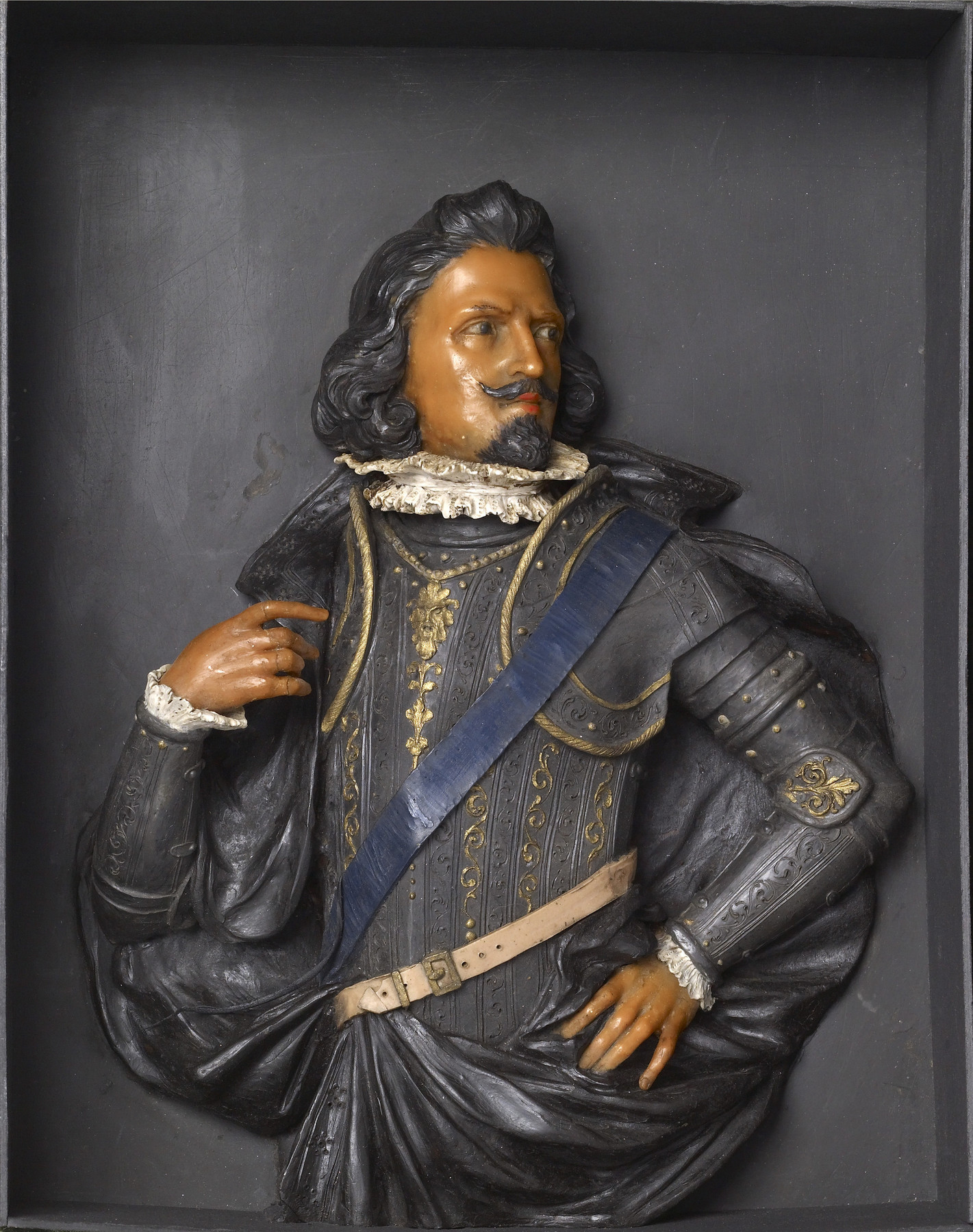Portrait of a Nobleman in Armor
Portraits of the nobility were often conservative in terms of presenting the subject’s status, but novelty in technique was admired, especially for inclusion in a Chamber of Wonders. Wax became popular for this use in the later 1500s in court circles. It is an attractive material to interpret human skin because of its texture and potential translucency.
The subject wears half armor (above the waist) with a collar datable to the 1600s. His left hand rests decisively on his hip. The present “shadow box” is old but not necessarily original. The frame is modern but designed to suggest a period treatment.
A note in the Walters' files suggest an identification as Marchese Ginori of Florence but without any documentation. The Ginori were an important aristocratic family, but no connection to this portrait has been found.
Provenance
Provenance (from the French provenir, 'to come from/forth') is the chronology of the ownership, custody, or location of a historical object. Learn more about provenance at the Walters.
Jacques Seligmann, Paris, by purchase; Henry Walters, Baltimore, 1912, by purchase; Walters Art Museum, 1931, by bequest.
Exhibitions
| 1971-1972 | World of Wonder. The Walters Art Gallery, Baltimore. |
Measurements
H of figure: 8 7/16 × W: 7 in. (21.5 × 17.8 cm); Framed H: 13 9/16 × W: 11 5/8 × D: 3 5/8 in. (34.5 × 29.5 × 9.2 cm).
Credit Line
Acquired by Henry Walters, 1912
Location in Museum
Not on view
Accession Number
In libraries, galleries, museums, and archives, an accession number is a unique identifier assigned to each object in the collection.
In libraries, galleries, museums, and archives, an accession number is a unique identifier assigned to each object in the collection.
75.2


